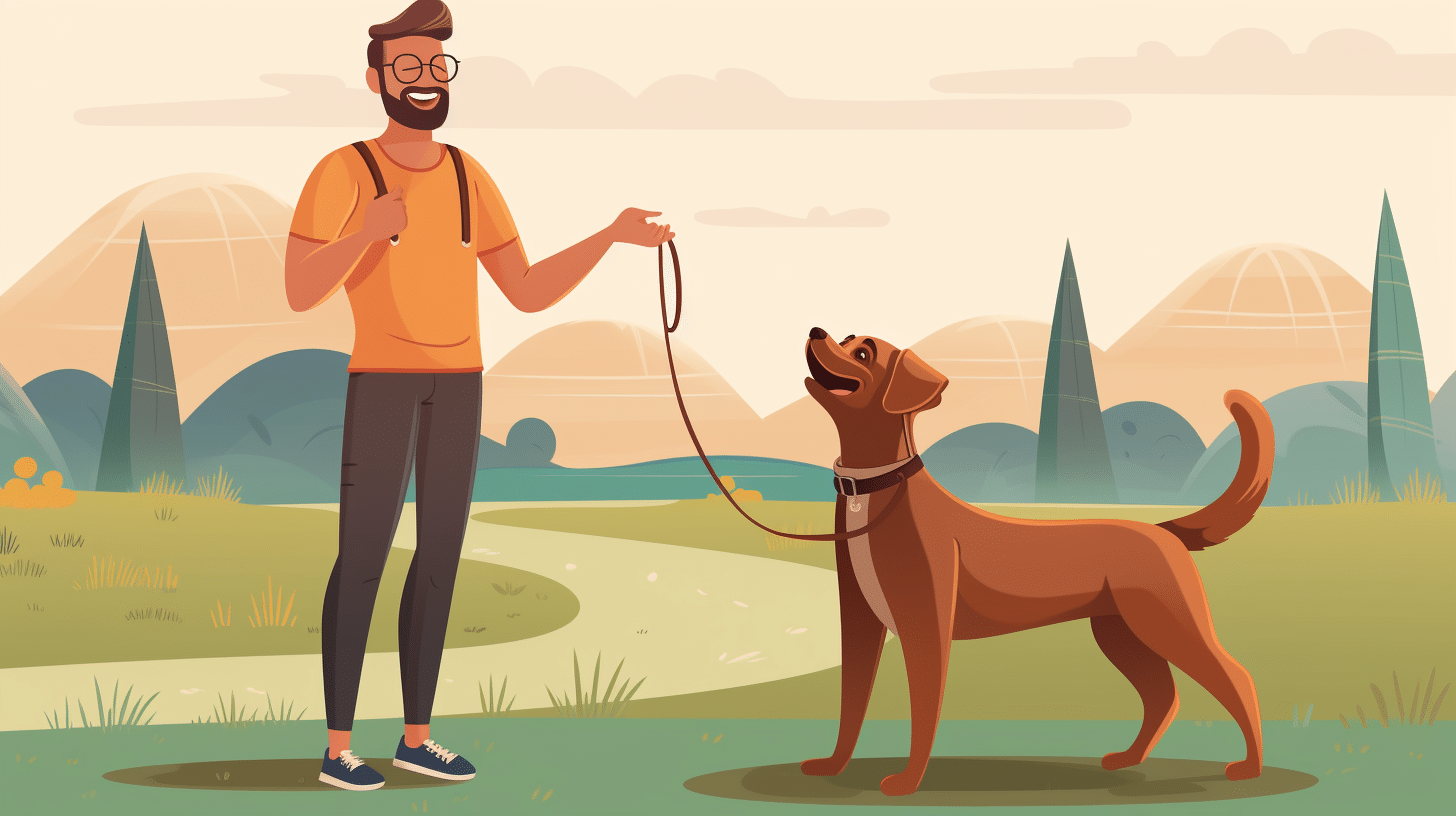# Unlock the secrets to successful dog training.
Are you struggling to train your furry friend? Don’t worry, we’ve got you covered.
In this article, we will share 5 expert tips that will make the training process a breeze.
You’ll learn how to:
– Set clear expectations
– Use positive reinforcement techniques
– Establish consistency and routine
– Ensure proper socialization and exposure
– Have patience and persistence
With these tips, you’ll be well on your way to having a well-behaved and obedient dog.
Let’s dive in!
## Setting Clear Expectations
To ensure successful dog training, you need to clearly communicate your expectations. Dogs are intelligent creatures and can understand what you want from them if you communicate effectively.
Start by using clear and consistent commands. Use simple words like ‘sit,’ ‘stay,’ and ‘come’ that your dog can easily understand. Avoid using long and complex sentences that may confuse them.
Additionally, use positive reinforcement to reward your dog when they follow your commands correctly. This can be in the form of treats, verbal praises, or even a pat on the head.
Consistency is key in setting expectations. Make sure everyone in your household is on the same page and uses the same commands and rewards.
## Positive Reinforcement Techniques
Using positive reinforcement techniques, you can easily motivate your furry friend to learn new commands. By rewarding your dog for performing desired behaviors, you create a positive association and encourage them to repeat those actions.
Start by identifying a reward that your dog finds most enticing, such as treats, toys, or verbal praise. When your dog successfully follows a command, immediately provide the reward and enthusiastically praise them. This positive reinforcement strengthens the connection between the behavior and the reward, making your dog more eager to comply.
Consistency is key, so be sure to reward your dog every time they exhibit the desired behavior. With patience and repetition, your furry friend will quickly learn new commands and enjoy the process of training.
## Consistency and Routine
By consistently implementing a routine, you can establish clear expectations for your furry friend and promote a sense of structure in their daily life. Dogs thrive on routine and predictability, so having a consistent schedule will help them feel secure and confident.
Start by establishing set times for feeding, walks, playtime, and training sessions. This will not only make your dog more obedient, but it will also make your life easier. Dogs are creatures of habit, so sticking to a routine will make them happier and less prone to behavioral issues.
Remember to be flexible within the routine, accommodating unexpected events or changes, but try to maintain a consistent overall structure. With a consistent routine, your furry friend will feel more secure, leading to a well-behaved and happy dog.
## Socialization and Exposure
Socializing your dog from a young age is crucial for their development. It helps them become well-adjusted and confident in various social situations. By exposing your dog to different people, animals, and environments early on, you are helping them build positive associations and teaching them how to interact appropriately.
Take your dog on walks in different neighborhoods. Introduce them to other friendly dogs. Invite friends and family members to visit your home. Encourage your dog to meet new people and reward them for calm and friendly behavior. Exposing your dog to new experiences will help prevent fear and aggression issues later in life.
## Patience and Persistence
Don’t give up on your dog’s socialization journey – it takes time and consistency to see progress.
Remember, every dog is different, and some may take longer to adjust than others. But with patience and persistence, you can help your furry friend become more comfortable and confident in social situations.
Start by slowly introducing your dog to new people, animals, and environments, ensuring that they feel safe and supported throughout the process. Offer plenty of positive reinforcement and rewards for good behavior, and gradually increase the level of exposure over time.
## Frequently Asked Questions
### How to Handle a Dog With Aggression Issues During Training?
To handle a dog with aggression issues during training, start by identifying the triggers.
Then, consult a professional trainer for guidance on implementing positive reinforcement techniques, such as desensitization and counterconditioning.
### Are There Any Specific Techniques to Train a Stubborn or Independent Dog?
There are specific techniques to train a stubborn or independent dog. Consistency is key. Use positive reinforcement, rewards, and clear commands.
Patience and understanding are important. Seek professional help if needed.
### What Should I Do if My Dog Is Not Responding to Positive Reinforcement Techniques?
If your dog is not responding to positive reinforcement techniques, try using a different reward system or finding out what motivates them.
It’s important to be patient and consistent in your training approach.
### How Can I Socialize My Dog With Other Animals if I Don’t Have Access to a Local Dog Park?
If you don’t have access to a local dog park, try organizing playdates with friends or neighbors who have well-behaved animals.
It’s a great way to socialize your dog and help them feel more comfortable around other animals.
### Is It Possible to Train an Older Dog, or Is Training Only Effective for Puppies?
Yes, it’s possible to train an older dog. Training can be effective for dogs of all ages. With patience and consistency, you can teach your older dog new tricks and behaviors.
## Conclusion
So there you have it, five essential tips for training your dogs.
Remember to set clear expectations, use positive reinforcement techniques, be consistent and establish a routine, socialize and expose your dog to new experiences, and above all, be patient and persistent.
By following these guidelines, you can create a strong bond with your furry friend and ensure their behavior is well-behaved and obedient.
Happy training!









